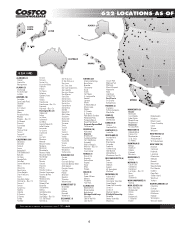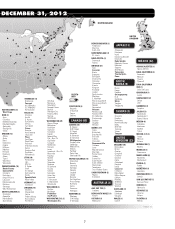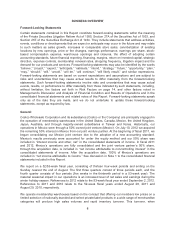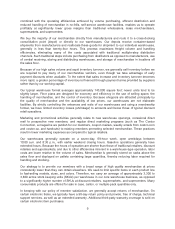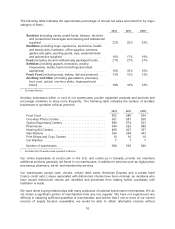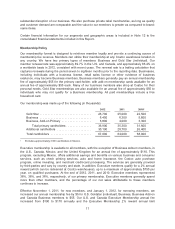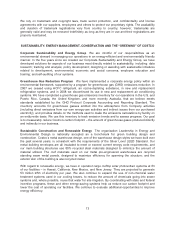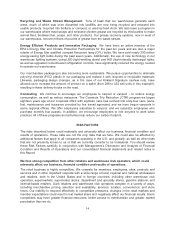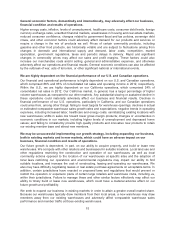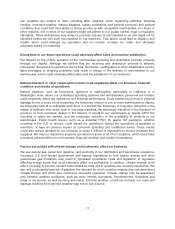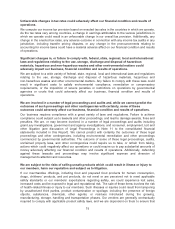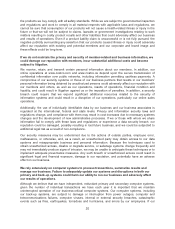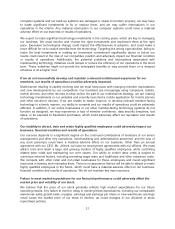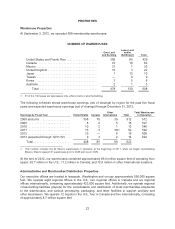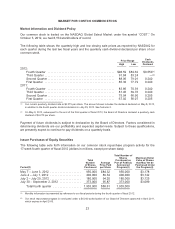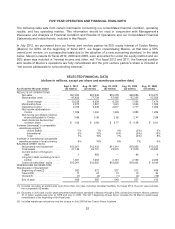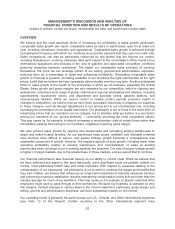Costco 2012 Annual Report Download - page 18
Download and view the complete annual report
Please find page 18 of the 2012 Costco annual report below. You can navigate through the pages in the report by either clicking on the pages listed below, or by using the keyword search tool below to find specific information within the annual report.We also intend to open warehouses in new markets. The risks associated with entering a new market
include difficulties in attracting members due to a lack of familiarity with us, attracting members of other
wholesale club operators currently operating in the new market, our lack of familiarity with local
member preferences, and seasonal differences in the market. In addition, entry into new markets may
bring us into competition with new competitors or with existing competitors with a large, established
market presence. In new markets, we cannot ensure that our new warehouses will be profitably
deployed and, as a result, our future profitability could be delayed or otherwise materially adversely
affected.
We may not timely identify or effectively respond to consumer trends, which could negatively
affect our relationship with our members, the demand for our products and services, and our
market share.
It is difficult to consistently and successfully predict the products and services our members will
demand. Our success depends, in part, on our ability to identify and respond to trends in demographics
and consumer preferences. Failure to timely identify or effectively respond to changing consumer
tastes, preferences (including those relating to sustainability of product sources) and spending patterns
could negatively affect our relationship with our members, the demand for our products and services
and our market share. If we are not successful at predicting our sales trends and adjusting our
purchases accordingly, we may have excess inventory, which could result in additional markdowns and
reduce our operating performance. This could have an adverse effect on margins (net sales less
merchandise costs) and operating income.
Our failure to maintain positive membership loyalty and brand recognition could adversely
affect our results of operations.
Membership loyalty is essential to our business model. Damage to our brands or reputation may
negatively impact comparable warehouse sales, lower employee morale and productivity, diminish
member trust, and reduce member renewal rates and, accordingly, membership fee revenues,
resulting in a reduction in shareholder value.
In addition, we sell many products under our owned and exclusive Kirkland Signature brand.
Maintaining consistent product quality, competitive pricing, and availability of our Kirkland Signature
products for our customers is essential to developing and maintaining customer loyalty. These
products also generally carry higher margins than national brand products and represent a growing
portion of our overall sales. If the Kirkland Signature brand experiences a loss of consumer acceptance
or confidence, our sales and gross margin results could be adversely affected.
Vendors may be unable to supply us with quality merchandise at the right prices in a timely
manner or may fail to adhere to our high standards resulting in adverse affects on our
business, merchandise inventories, sales and profit margins.
We depend heavily on our ability to purchase merchandise in sufficient quantities at competitive prices.
We have no assurances of continued supply, pricing or access to new products, and any vendor could
at any time change the terms upon which it sells to us or discontinue selling to us. Member demands
may lead to out-of-stock positions of our merchandise leading to loss of sales and profits.
We purchase our merchandise from numerous domestic and foreign manufacturers and importers and
have thousands of vendor relationships. Our inability to acquire suitable merchandise on acceptable
terms or the loss of key vendors could negatively affect us. We may not be able to develop
relationships with new vendors, and products from alternative sources, if any, may be of a lesser
quality or more expensive than those from existing vendors. Because of our efforts to adhere to high
quality standards for which available supply may be limited, particularly for certain food items, the large
volume we demand may not be consistently available.
16


